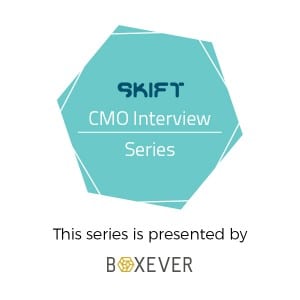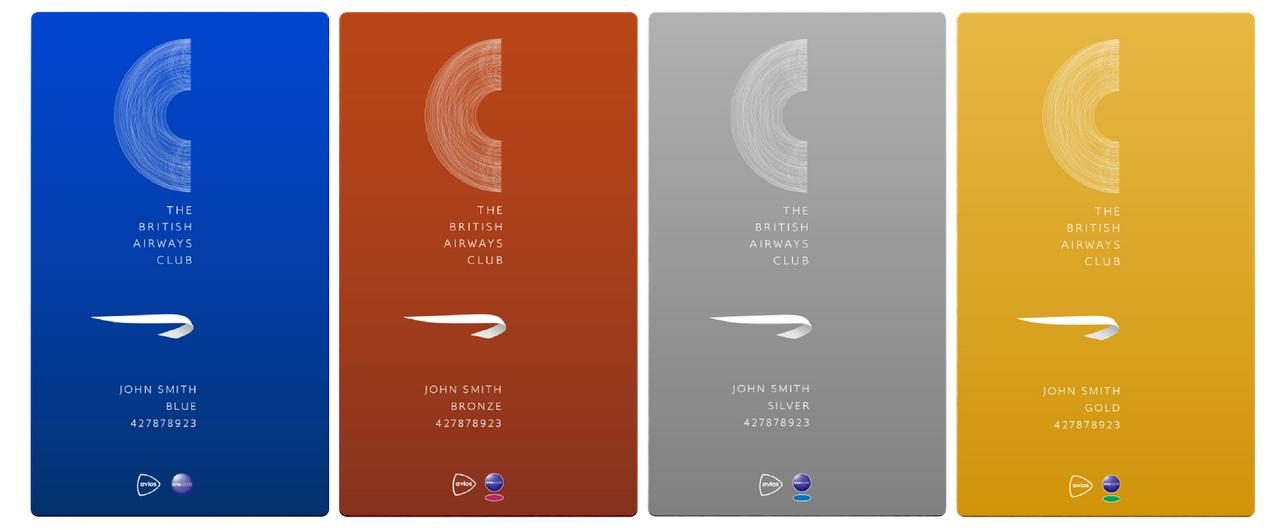Skift CMO Interviews: Why Finnair Markets the Destinations First

Skift Take
Editor's Note: Following our previous CEO interview series in online travel, hospitality, and destinations, Skift has launched a series, this time focused on Chief Marketing Officers.
To better understand the big marketing challenges facing travel brands in an age when consumers are in control, Skift's What Keeps CMOs Up at Night will talk with the leading voices in global marketing from across all the industry's sectors.
These interviews with leaders of hotels, airlines, tourism boards, digital players, agents, tour operators and more will explore both shared and unique challenges they are facing, where they get insights, and how they best leverage digital insights to make smarter decisions.
This is the latest interview in the series.
Finnair has built a strong brand by tapping in to its cultural and geographic uniqueness. By developing a customer-centric service model, with an emphasis on smart retailing, it has also strengthened its financial position.
The airline’s collaboration with its home airport, Helsinki, has helped support development for both parties.
Finnair and Helsinki are positioning themselves as the ideal bridge between North Asia and Europe. As it pursues this strategy, Finnair is becoming more savvy about what inspires Asian consumers to travel, and what those consumers look for when choosing an airline to take them where they want to go.
Skift spoke one-on-one with Finnair Chief Commercial Officer Juha Järvinen during the CAPA Airlines in Transition meeting in Dublin. He shared the challenges of positioning a brand for a different consumer culture, outlined the next step in the evolution of the airline’s retailing strategy, and explained why social, for Finnair, requires extra planning.
Skift: How do you see Finnair brand positioning?
Järvinen: Even though we had a good position, as a brand we're still challenged by the fact that we're a quite unknown brand outside of the near regions of Finland. So how do we position ourselves in the UK, how do we position ourselves in Germany? And, of course, in North East Asia which is our focus area.
Especially now with the launch of the A350 program, we're trying to use that to reposition the brand as well.
We are relaunching a new website and mobile platform. It's a new user experience and also new technical solutions under the platform, and a completely new mobile platform. So that's launching this summer.
When we launch those, we need to have a 360 degree view of how we position the brand and maximize the passenger experience. In the end, it has to deliver customer value and loyalty.
Skift: Your website and mobile platforms, compared to other global airlines, is quite good. What was the motivation for that website and mobile update?
Järvinen: The biggest challenge we currently face is the lack of integration for ancillaries and merchandising. It's still very much a booking platform, and you can buy ancillaries but they're not integrated to the dialogue. The biggest change is that there are fewer steps and it varies the ancillaries that we integrate. The flow itself is what customers are giving us the most feedback on, and that's the biggest change.
Also, the visuals will be different. We have used a UK-based agency called Made by Many which has done the customer journey design. The core of design for design for that platform has been actually the mobile platform. It's the first time we've done the full website design based on mobile. It's definitely converting to desktop, instead of the other way around, which has usually been the case that you create the desktop version and then convert it to mobile.
We are also investing in more marketing resources in China. We'll be doing our marketing centrally, in Helsinki. But we strongly believe, considering the technological development, especially in China, that we need to be more local. We have to have the global view but a very strong local competency as well because technology is developing so fast.
Skift: How will local marketing strategy in China help shape your brand there?
Järvinen: The reason for the team for China, based in Shanghai, is so that they create the platform and the way they will communicate the brand in the Chinese manner. That's not something you can translate from Finland. We believe we need to have global marketing competencies in Shanghai. We're now in the recruiting phase and we will have a team in Shanghai by summer that takes over the marketing, planning, and design, for China.
Even beyond, in North Eastern Asia it will be different. Japan is different, and so on. I think it's a danger for many European airlines wanting to go into Northeast Asia to copy the way it looks, but their booking process and dialogue is different.
Skift: How is it different?
Järvinen: That’s the feedback we get. We have a Chinese speaker website that's translated, we haven't resolved what drives the Chinese consumer, what imagery we should try to sell the consumer.
Based on research about 90% of the travel search is done on mobile in China. So how do we bring the destinations? It's something that we need to highlight more. We have a tendency to bring the airline first, but our brand awareness — any brand awareness for a European airline — with the Chinese consumer is small.
So we have to bring destination marketing into it. Then we are the solution provider for that destination, instead of Europe where you tend to go by the airline brand. That's something that we are in the process of revisiting and doing it in the Chinese way, without losing the Nordic feel of the airline. That's the reason a Chinese consumer chooses a foreign airline. They want to experience the difference and the booking dialogue should be such a difference.
Destination marketing helps differentiate from Chinese airlines. In the Chinese language there isn't a word for Finnair, for example, it's Finnish airline. So there are many international concepts that are not translated directly. It usually takes being in the country. That's the way for us to differentiate against Emirates, British Airways, Lufthansa, by highlighting the country and region. In the case of Finnair it's Finland, Scandinavia, Russia, which then makes it interesting for the consumer. It's different. Not just offering the same thing that everybody else does.
Skift: So destination is the deciding factor for these customers?
Järvinen: From research we've received and asked for it is more about the destination, the experience of travel. The aircraft experience is not as important. For the premium segment it is very important, but for the economy segment it's not really a driver. The key driver is that they really want to experience something exclusive — something which will differentiate them from their friends. Also connectivity, we see that more and more. They do demand connectivity and that's something we know and we're working on. We'll be finishing by spring '17, so all Finnair aircraft will be installed with Wi-Fi.
Skift: How satisfied are you with the evolution of the brand and what other plans for improvement do you have in place?
Järvinen: The big transformation applies to the larger part of the airline as well as earnings change, the growth of ancillaries which has also led to the fact that we need to rethink marketing. The way that we communicate to customers, how often do we send relevant offers, and how relevant are they?
And the level of personalization in our loyalty program Finnair Plus. We've been working that over the past year and we are going out with a relaunch of Finnair Plus, which will be effective as of July. We are changing the tier structure and revisiting benefits we are really working around that, and key to that change is data-driven marketing. We want to make sure that we send the relevant offers to each tier.
That, I would say, is the biggest change in marketing where we are now. I would still claim that we are only taking first steps in how we manage the channel mix, using data and also how we're managing our marketing ROI. I don't think we are there where we should be.
We are integrating the loyalty program very tightly into brand experience as well. We believe you can't really separate marketing and loyalty. I think many airlines have done it in the past, including Finnair, but we decided we wanted to put it together because we're talking about the same data both for loyalty management and for marketing purposes.
We have worked a lot on the social media side now.
Skift: Tell us about social media. You had the #Finnairtweets campaign but that sort of dropped off, and you seem to use the channels to share more than engage.
Järvinen: We need to revisit how we manage our social media strategy as a whole. I would say our social media strategy is still campaign-based, which is not the way that should be in future.
A lot of it is competencies. We actually don't have that profile in house and that's something the new head of marketing on my team is working on. How should we actually structure around it? Are there ways of doing it ourselves or do we get a partner doing it? So the biggest thing we're missing is the people. We don't have dedicated people in that area, and that's something we want to have resolved in the summer.
Skift: Is Facebook dead, do you think, or is it still relevant?
Järvinen: Facebook is evolving. There's always something new that will come up, but I don't see Facebook disappearing in the short term. I don't know what the next big thing will be, but I think it is more about social, about sharing.
It's a challenge for all of us keeping up with all the new channels including Snapchat which is not really my thing, but you have to stay tuned to what's happening. I'm sure there will be something replacing or potentially moving attention away from Facebook, but it's still extremely important to us. Facebook and others are further improving their algorithms so it becomes far more relevant to us as a marketing channel.
This series is presented by Boxever. The Skift content team maintains complete editorial control over these interviews and the selection of subjects.
For more insights from Boxever, please see the following reports:
- Free Skift Report: The Psychology of Customer Experience
- Free Skift Report: The Habits of Travel Bookers: How Americans Take Vacation
- Free Skift Report: What Travel Brands Can Learn from Behavioral Economics





